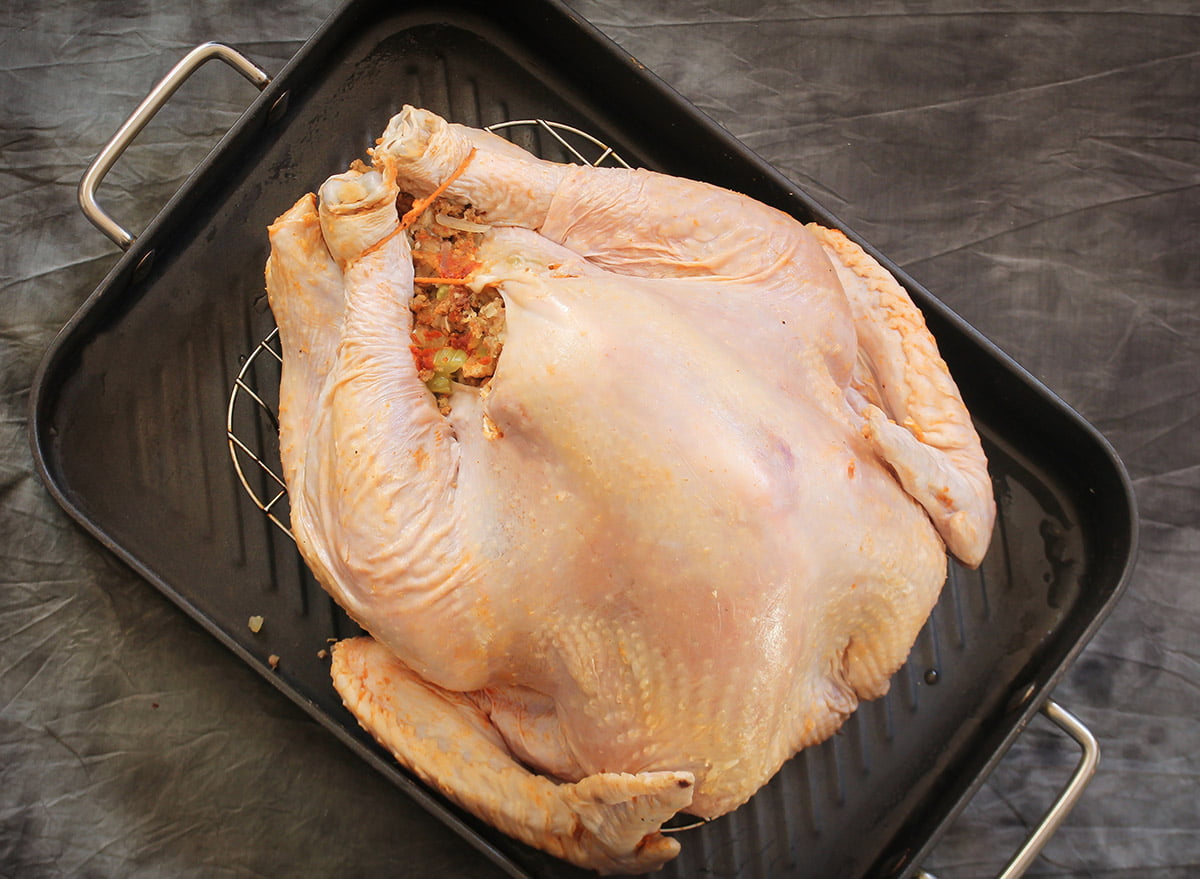Should you thaw chicken and turkey in warm or cold water? Whether it’s chicken or turkey, the fact remains that having either of them frozen solid on that special occasion is a nightmare. To avoid this and make the thawing process quicker, what’s the most optimal temperature of water to thaw your frozen meat?
Table of Contents
Should you use hot water or cold water? And what other methods are there?

While you wait anxiously for the stupid bird to thaw, you might be tempted to try and speed things up a bit by adding some warm water, you know, heat makes ice disappear right?
Don’t do it, please, fight the urge to use warm water. You see, the topic says chicken or turkey but it pretty much applies to any other type of meat you plan on defrosting.
When you’re defrosting a whole chicken or turkey, you’re essentially trying to get it through the danger zone (40F to 140F) as fast as possible before bacteria and other harmful microbes begin to thrive in it.
Before I continue, allow me to throw more light on what exactly is the danger zone
According to the USDA, the danger zone, with regards to food, is the particular temperature where harmful microbes grow really rapidly and even double in less than 20 minutes. The temperature ranges from 40F to 140F. If it’s higher than 140F, the microbes will be destroyed, but if it’s lower than 40F, the microbes will be rendered inactive.
This is why meat needs to be cooked well above 140F and your fridge temperature should be well below 40F.
Okay, back to the topic. When you use warm water, it’ll be almost impossible for the center and the outer portions of the frozen chicken or turkey to be at uniform temperature. This means, while the insides are still frozen, the outer portions are already entering the danger zone. While you’re waiting for everything to be defrosted, the outer parts are already loaded with microbes.
Further Explanation
The 40F to 140F I mentioned earlier is more of a high and low point than a range. Don’t get it twisted, you’re not safe in the temperatures within 40F and 140F, you’re only safe when the temperature is either below 40F or above 140F.
If it’s 50, 60, 70, and so on, bacteria will be able to thrive. Now here’s the thing, warm water won’t be able to take your frozen meat above the 140F mark, which means it’ll likely be within the 40F to 140F mark (most probably 50, 60F), can you see the problem?
What about cold water?
Yes, you can actually thaw your frozen chicken or turkey in cold water. All you have to do is submerge it in a big pot of cold water.
Change the water every 30 minutes because with time, it’ll start absorbing heat from the surrounding and then it’ll start getting warm. It’ll take about 30 minutes per pound, it’s not a super fast method but if you have a 16-pound turkey to work with, and you also have 8hrs, this method will work well for you.
Other great and safe methods to thaw your frozen chicken or turkey
Cooking it straight from its frozen state
If you don’t have time to thaw, you could try this method, and best of all, it’s USDA approved. All you need to do is increase the cooking time of your oven by 50%. Don’t try to pre-thaw it first, just bear in mind that it’s going to take longer to cook and then plan around it.
Thaw with a refrigerator
This one is also approved and even recommended by the USDA, it’s also the safest method to use because the turkey will thaw at a consistent and safe rate.
See also: how long is leftover mashed potatoes good for?
All you need to do is take it out of the freezer and leave it in the fridge. It’s quite a slow method so allow one day for each 4–5 pounds of frozen meat. If your turkey is 16 pounds, it’ll take 4 days to thaw completely.
Using a microwave
Before you use a microwave, check out the instruction manual for the appropriate size that’ll actually fit, the power level to use, and the minute per pound.
Take away any wrapping and then use a microwave friendly dish to prevent the drippings from staining the insides of the microwave. Use the defrost function depending on the weight but generally, allow about 6 minutes per pound when you’re using the microwave to thaw. Rotate and flip the frozen meat from time to time.
If you discover that the turkey is cooking instead of thawing, allow it to rest for about 5 minutes before you continue thawing. While you’re thawing, you might want to cover the tips of the wings with a foil paper to prevent it from cooking.
Once the turkey has finished thawing, you should cook it immediately.